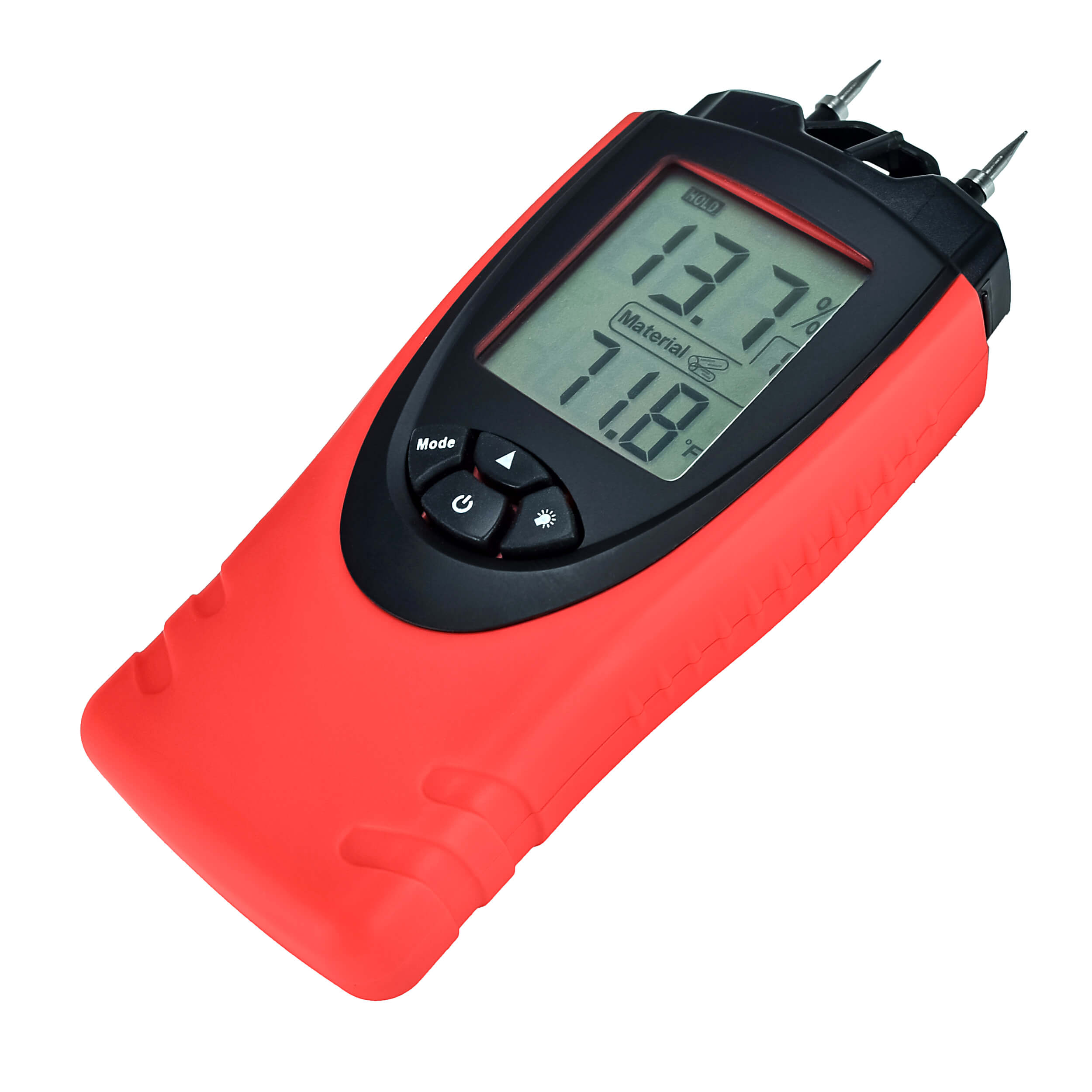Exactly How a Moisture Meter Can Help You Keep Optimal Conditions in your house or Office
Exactly How a Moisture Meter Can Help You Keep Optimal Conditions in your house or Office
Blog Article
Look Into the World of Moisture Meters: Everything You Need to Know
In the realm of moisture meters lies a globe of precision and usefulness that typically goes undetected. These tools, while seemingly uncomplicated, hold a wealth of info that can considerably affect different industries and applications. Recognizing exactly how moisture meters operate, the various kinds offered, and their varied usages can clarify their relevance in making certain high quality and efficiency. By checking out the complexities of dampness meters, one can discover a useful tool that transcends mere dimension, providing insights that can make a considerable distinction in various areas.
How Moisture Meters Work
Moisture meters operate by determining the electrical conductivity or capacitance of materials to figure out the dampness web content existing. These meters are very useful devices throughout numerous industries, consisting of building, woodworking, and agriculture. By making use of different methods such as pinless or pin-type modern technology, wetness meters give precise analyses that help specialists make informed choices.
Pin-type dampness meters function by putting the sharp pins right into the product being examined. The electric conductivity in between the pins is then gauged, with higher dampness degrees causing raised conductivity. Moisture Meter. On the other hand, pinless dampness meters use electro-magnetic signals to check a bigger location without creating any type of damages to the product's surface. These meters are optimal for promptly examining moisture levels in huge locations or finished items.
No matter the technique utilized, dampness meters play an important function in avoiding problems such as mold and mildew development, structural damages, or item defects triggered by excess dampness. Recognizing how these meters work is crucial for ensuring the quality and integrity of materials in various applications.
Types of Moisture Meters
Provided the important role dampness meters play in various sectors, it is important to understand the different types available to experts for precisely assessing dampness degrees - Moisture Meter. There are mainly 2 main types of dampness meters: pin-type and pinless moisture meters

On the various other hand, pinless moisture meters make use of electromagnetic sensor plates to scan a larger area of the material without triggering any kind of damages. This type appropriates for quickly scanning huge locations and is frequently utilized for flooring, walls, and ceilings. Pinless meters are hassle-free for taking readings on completed surfaces without leaving any visible marks.
Both kinds of dampness meters have their advantages and are chosen based on the certain requirements of the work available. Comprehending the differences between these kinds is critical for specialists to make precise moisture evaluations.
Applications Throughout Industries
Building and construction experts count on moisture meters to evaluate the moisture levels in structure products like drywall, concrete, and wood, which is vital for keeping architectural integrity and avoiding issues like rot or mold. The floor covering sector makes use of wetness meters to gauge the wetness web content in subfloors prior to setting up numerous flooring treatments, avoiding pricey problems due to excess moisture. In the food sector, wetness meters are used to keep track of find and regulate moisture levels in products such as grains, nuts, and dried fruits to maintain quality and high quality.
Tips for Using Moisture Meters
When gauging the moisture content in different products,Make use of the moisture meter's calibration settings to guarantee precise analyses. Calibration is crucial for the correct functioning of a moisture meter. Before each use, it is a good idea to examine and readjust the calibration setups according to the particular product being tested. Furthermore, see to it the meter is readied to the correct moisture range for the material you are measuring to obtain the most accurate results.
When utilizing a pin-type moisture meter, insert the pins to the appropriate deepness advised for the product being examined. This makes certain that the wetness readings are taken from the correct deepness within the product, offering a more accurate depiction of its wetness material. For pinless wetness meters, keep in mind to maintain correct call with the material's surface area to obtain trustworthy readings.
Frequently check and change dig this the batteries in your wetness meter to prevent unreliable readings because of low power. Shop the meter in a safe and completely dry location when not in use to extend its lifespan and preserve its precision. By complying with these pointers, you can optimize the performance of your moisture meter and get accurate dampness content measurements throughout different products.
Upkeep and Calibration
To ensure the accuracy of dampness content measurements, normal maintenance and calibration of the moisture meter are crucial action in its proper functioning. Upkeep entails keeping the moisture meter free and tidy from debris that might impact its analyses. It is very important to comply with the maker's standards for cleansing to avoid damages to the device. Furthermore, routine calibration is necessary to confirm the accuracy of the analyses. Calibration adjusts the dampness meter to make sure that it offers constant and trustworthy results.
Calibration should be executed regularly, especially if the dampness meter is utilized regularly or in important applications where accurate dimensions are needed. By calibrating the dampness and preserving meter routinely, customers can trust the precision of the dampness content dimensions obtained.
Verdict

To conclude, wetness meters play a critical role in different sectors by accurately measuring the wetness web content of products. Understanding exactly how these tools function, the different types available, and appropriate upkeep and calibration are essential for obtaining trustworthy outcomes. Whether in manufacturing, agriculture, or building, using dampness meters aids ensure quality control and efficiency in processes.

In final thought, wetness meters play an important function in various industries by properly gauging the wetness material of materials.
Report this page